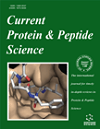
Full text loading...
We use cookies to track usage and preferences.I Understand
Cathepsin D is a lysosomal enzyme that plays a critical role in the process of protein catabolism. In marine organisms, research has primarily concentrated on the identification of the enzyme. However, in crustaceans and molluscs, it is known to have digestive functions, as it is the sole enzyme responsible for protein degradation at extremely acidic pH in the hepatopancreas. In the Japanese clam (Ruditapes philippinarum), cathepsin D was purified and partially characterised from the hepatopancreas.
To evaluate changes in secondary structure, circular dichroism (CD) was employed under a range of 5-70°C and pH of 1-7.5. Following dissection, the enzyme was purified from the hepatopancreas by ultrafiltration and affinity chromatography. SDS-PAGE was used to verify the sample purity, and gel filtration was used to determine the molecular weight. CD spectra were obtained at a concentration of 0.125 mg/mL, expressed as mean ellipticity per residue.
The purified cathepsin D demonstrated a specific activity of 5,553 ± 220 U/mg and a molecular weight of 36.5 kDa. The enzyme demonstrated optimal activity within a temperature range of 45-50°C and a pH range of 3-3.5. CD analyses demonstrated alterations in the secondary structure at elevated temperatures and pH fluctuations, which were correlated with a reduction in enzyme activity.
Cathepsin D from R. philippinarum exhibited high thermostability up to 50°C and activity at pH 2-4. Its stability and characteristics are comparable to those of other species, which opens avenues in biotechnology for protein hydrolysis and peptide production.

Article metrics loading...

Full text loading...
References


Data & Media loading...

